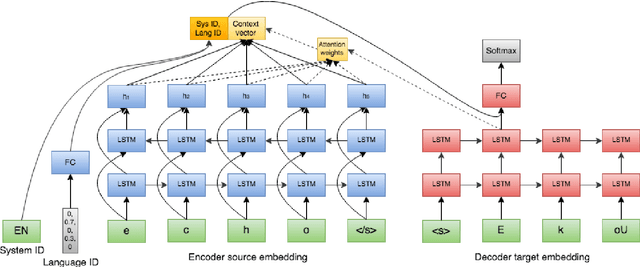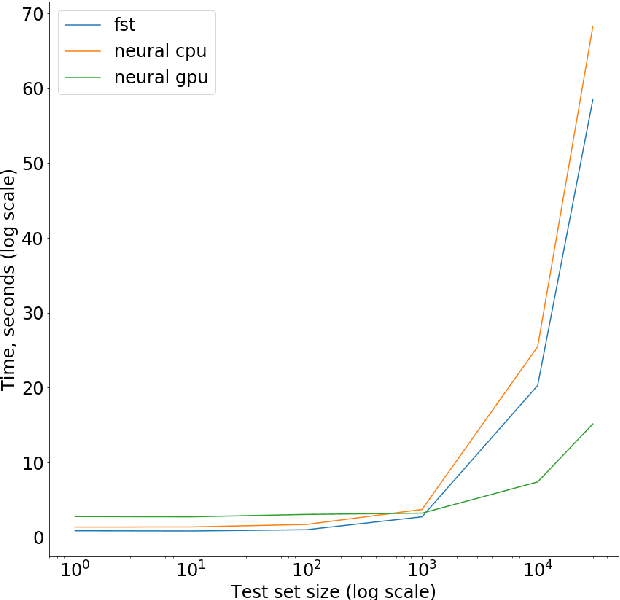Tracy Rohlin
Neural Machine Translation for Multilingual Grapheme-to-Phoneme Conversion
Jun 28, 2020


Abstract:Grapheme-to-phoneme (G2P) models are a key component in Automatic Speech Recognition (ASR) systems, such as the ASR system in Alexa, as they are used to generate pronunciations for out-of-vocabulary words that do not exist in the pronunciation lexicons (mappings like "e c h o" to "E k oU"). Most G2P systems are monolingual and based on traditional joint-sequence based n-gram models [1,2]. As an alternative, we present a single end-to-end trained neural G2P model that shares same encoder and decoder across multiple languages. This allows the model to utilize a combination of universal symbol inventories of Latin-like alphabets and cross-linguistically shared feature representations. Such model is especially useful in the scenarios of low resource languages and code switching/foreign words, where the pronunciations in one language need to be adapted to other locales or accents. We further experiment with word language distribution vector as an additional training target in order to improve system performance by helping the model decouple pronunciations across a variety of languages in the parameter space. We show 7.2% average improvement in phoneme error rate over low resource languages and no degradation over high resource ones compared to monolingual baselines.
 Add to Chrome
Add to Chrome Add to Firefox
Add to Firefox Add to Edge
Add to Edge